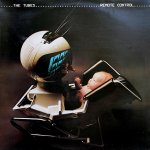About flicker and telecine (both things)
For PC users this could help:
SVP - 60 fps / 120 fps HFR motion interpolation for Windows, macOS in mpv, VLC, Plex
This solves the telecine issue, but demands a decent PC for a artifact-free image. And for avoiding flicker on fast response monitors, this is only limited from PC processing power, ie, one can use at 120Hz if want.
This divides opinions due to framerate not being the originally produced, but I liked it too much and not live without
For PC users this could help:
SVP - 60 fps / 120 fps HFR motion interpolation for Windows, macOS in mpv, VLC, Plex
This solves the telecine issue, but demands a decent PC for a artifact-free image. And for avoiding flicker on fast response monitors, this is only limited from PC processing power, ie, one can use at 120Hz if want.
This divides opinions due to framerate not being the originally produced, but I liked it too much and not live without
Interesting video: ....
VenusFly quoted:
> ==== Europe didn't do anything particularly clever with TV. They just watched
> how the American system worked for 10 years, and then shifted some of the
> easier numbers around. The hard part was how to build a color CRT, and
> discovering that HSB was possible and RGB unnecessary. You said it yourself -
> PAL was built around the knowledge America developed with NTSC.
That is profoundly wrong. PAL was a giant step forward from Never Twice Same Color.
PAL stands for Phase Alternation by Line. In NTSC phase errors become hue errors.
In PAL, these are converted to brightness errors that are much less annoying.
With PAL, nobody complained about bad colors.
cheers, Gerhard
Definitely a classic....
It is said that people from 60Hz countries find this, while those from 50Hz countries are happy with it. I believe there are versions of PAL with different geometry, as the principal feature (alternating phase) can be used with different numbers.cbdb said:Unfortunatley PALs frame rate is to slow
Reminds me of all the hype a few years back about widgets that would turn any surface into a loudspeaker....
Lots of crap falls on the wayside, there has been a lull in the the headgear that controls all your devices with brainwaves. Right now oversold technology probably outweighs the useful by a considerable margin.
Remembering Dr. Tomorrow, from the past, Frankly.
One of the guys living in the marina I worked at in the early 80's was Frank Ogden, a technical consultant and regional manager for Sony.
His houseboat had some cool flat driver speakers, and he said Sony was working on a gadget you could adhere to windows or walls, turning the surface into speakers. I asked if it wouldn't disturb the neighbours.
Wasn't Dayton Audio, and some other companies reviving this stuff, with foam or cardboard drivers, printed as portraits?
Lots of crap falls on the wayside, there has been a lull in the the headgear that controls all your devices with brainwaves. Right now oversold technology probably outweighs the useful by a considerable margin.
One of the guys living in the marina I worked at in the early 80's was Frank Ogden, a technical consultant and regional manager for Sony.
His houseboat had some cool flat driver speakers, and he said Sony was working on a gadget you could adhere to windows or walls, turning the surface into speakers. I asked if it wouldn't disturb the neighbours.
Wasn't Dayton Audio, and some other companies reviving this stuff, with foam or cardboard drivers, printed as portraits?
One of the guys living in the marina I worked at in the early 80's was Frank Ogden, a technical consultant and regional manager for Sony.
His houseboat had some cool flat driver speakers, and he said Sony was working on a gadget you could adhere to windows or walls, turning the surface into speakers. I asked if it wouldn't disturb the neighbours.
Wasn't Dayton Audio, and some other companies reviving this stuff, with foam or cardboard drivers, printed as portraits?
Yeah, they were selling blackboards with gadgets inside to make the blackboard a speaker. Sounded better than you might expect (though not a lot better)
Waay back in the '70s, the music store where I worked was still selling audio gear. Mostly pretty decent stuff - McIntosh, Bozak, Sony, Ohm, Advent, etc. Every once in awhile the salesman would get a wild hair and take on an oddball line.
For awhile we sold speakers made by the Bertagni Eletroacoustic Systems company (BES). Basically they were dipoles, with voice coils driving large, rectangular styrofoam diaphragms. The cheaper models were full-range, the more expensive had separate LF & HF panels (here's a bunch of pics).
They were kinda pricey as I recall, and although they didn't sound terrible, they really weren't very accurate either. I dunno. They looked kinda cool, I suppose. I do remember the company rep demonstrating that you could jam a pencil through the styro panel and it would keep right on working, no problem! Okay, uh, good to know, thanks...
For awhile we sold speakers made by the Bertagni Eletroacoustic Systems company (BES). Basically they were dipoles, with voice coils driving large, rectangular styrofoam diaphragms. The cheaper models were full-range, the more expensive had separate LF & HF panels (here's a bunch of pics).
They were kinda pricey as I recall, and although they didn't sound terrible, they really weren't very accurate either. I dunno. They looked kinda cool, I suppose. I do remember the company rep demonstrating that you could jam a pencil through the styro panel and it would keep right on working, no problem! Okay, uh, good to know, thanks...
- Status
- Not open for further replies.
- Home
- Member Areas
- The Lounge
- Funniest snake oil theories
